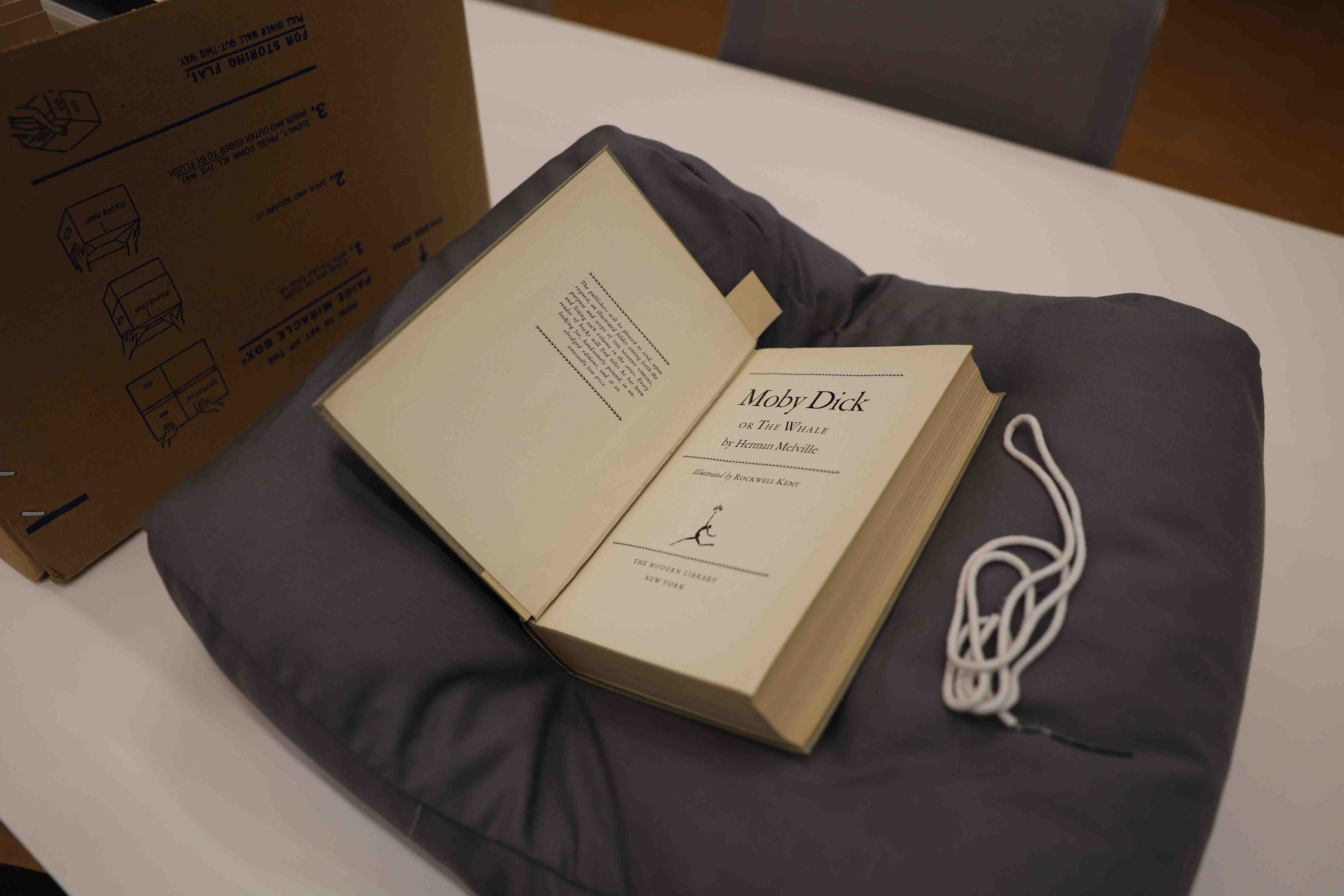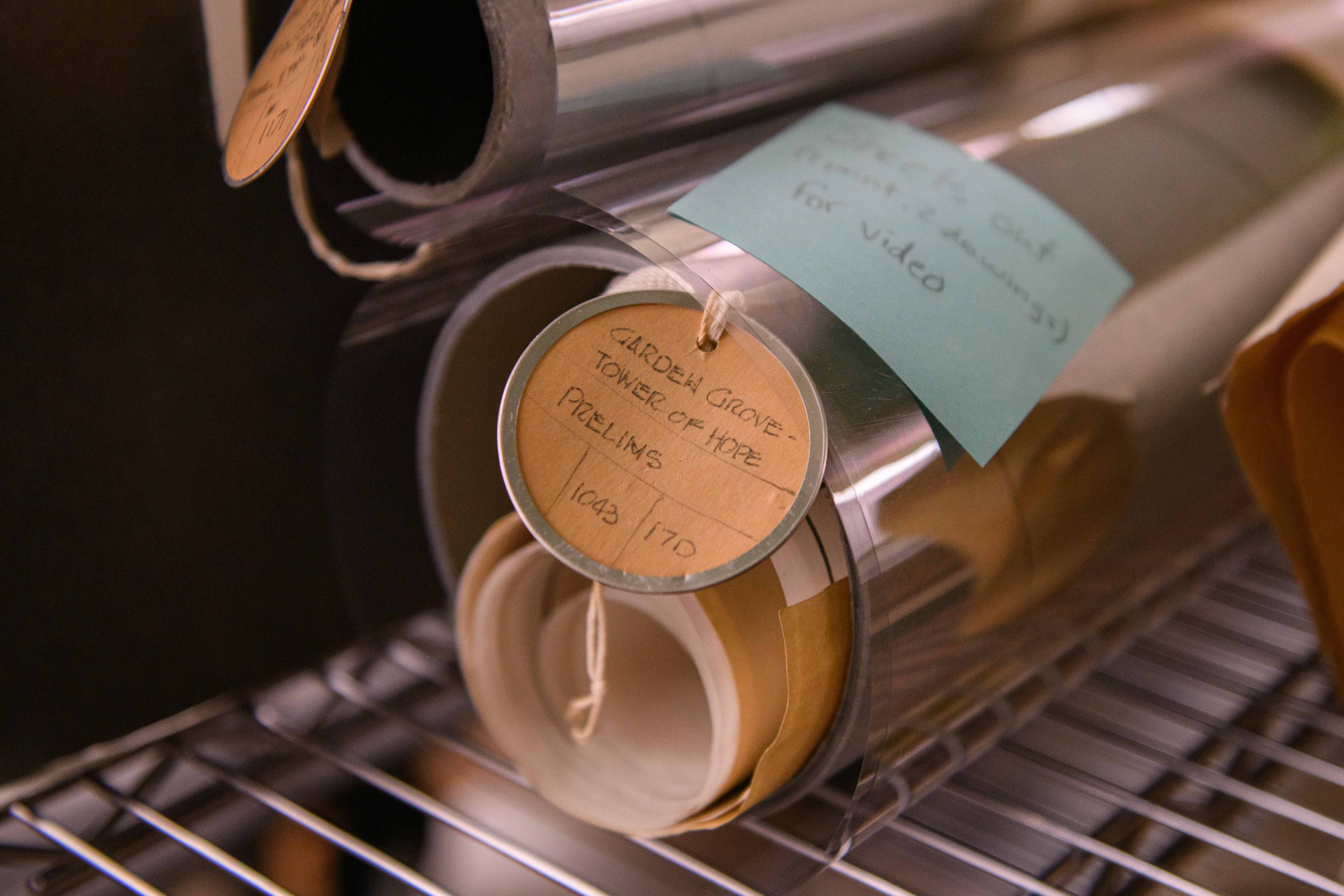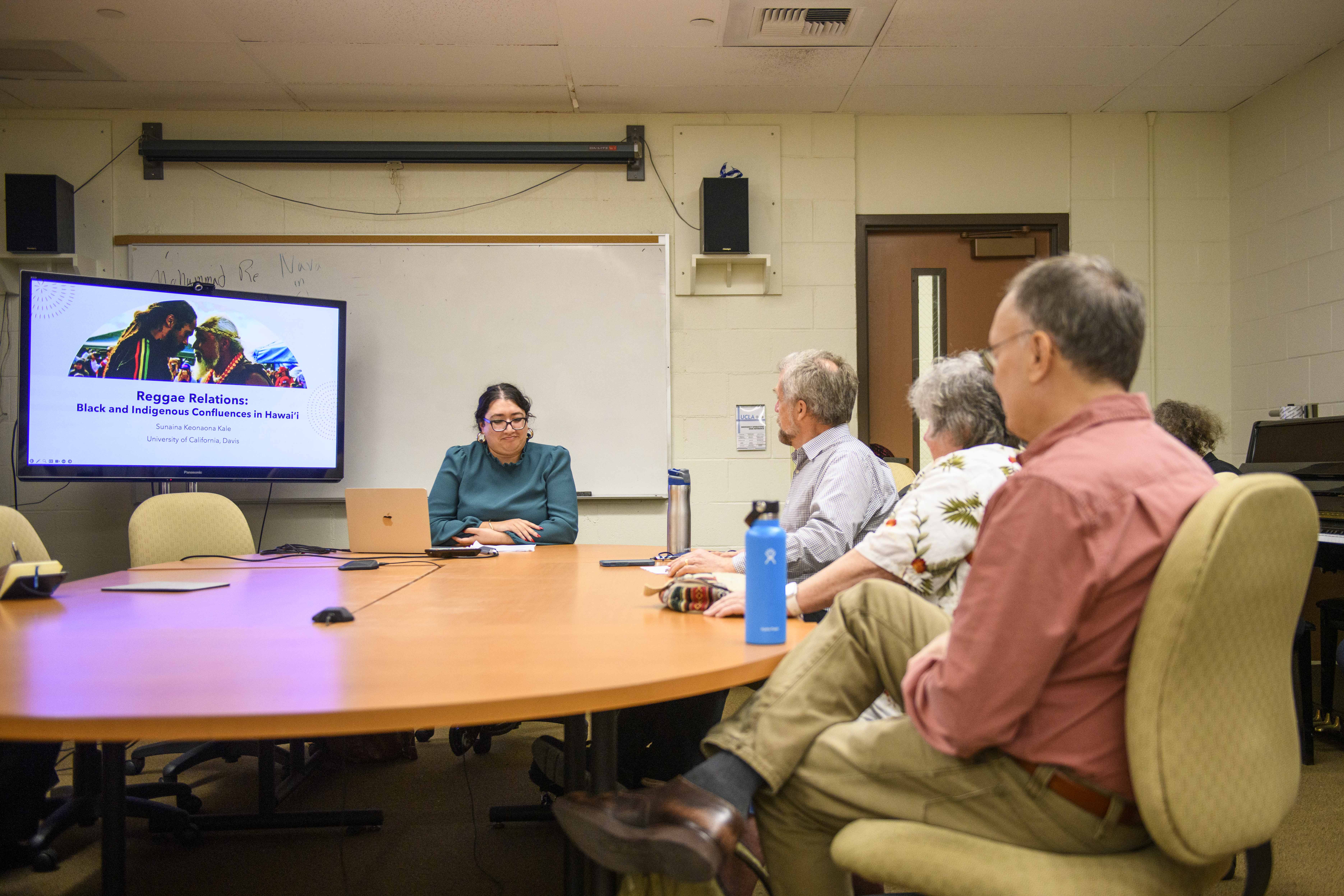Seminar explores rich written archives at Young Research Library and beyond

A copy of Herman Melville’s Moby Dick is pictured in the UCLA Library Special Collections at the Charles E. Young Research Library. The collection holds several first editions of classic books and material that dates back to 4000 B.C. (Megan Cai/Daily Bruin photo editor)
By Tiffany Xiao
June 3, 2024 11:50 p.m.
This post was updated June 4 at 12:48 a.m.
Most people may not consider an 18th century Chinese wood block a book. Yet Professor Matthew Fisher’s new English capstone seminar challenges students to reimagine what a “book” can be – a paperback novel, fruit labels or even a collection of bark fabrics.
Working in collaboration with the UCLA Library Special Collections in the Charles E. Young Research Library, Fisher said he created English 184.3: “Books in the Basement: New Encounters with Old Books” – a capstone seminar that teaches students how to discover primary sources and analyze them through a critical lens. The 15-student capstone class, which meets for three hours each week, consists mostly of seniors but is open to any student who has met its prerequisites.
Fisher’s experience researching medieval manuscripts and teaching seminars to library and information science, education and English graduate students inspired him in 2019 to create an undergraduate class exploring books – which has now come to fruition, he said.
“The library has these unbelievable treasures that one: most people don’t necessarily know about, and, two: can really very differently shape how we think about literature, how we argue about literature and how we think about books as objects – not just books as texts,” he said.
Through the combination of reading assignments, reflections and research of primary sources, Sihui Lin, a second-year English student, said the class has taught her to understand books as a type of artifact.
“We’re understanding books as an actor in history which actually influenced the way knowledge is disseminated and produced instead of just something that records knowledge,” she said.
Fisher said his students spend an hour and a half in UCLA Library Special Collections in the Young Research Library each week, where they can study books they are interested in before meeting for class.
[Related: In Plain Sight: Preservationists maintain, repair UCLA Library’s media materials]
The class examined books including the 1403 contract for the sale of an enslaved woman named Magdalena in Barcelona and punk zines made in Berkeley in the 1990s, Fisher said.
Lin said she has enjoyed studying printing technologies from 18th century China.
“I found this wood block, which still has ink on it from 300 years ago, which really blows my mind,” she said. “It shows you so much about the resources UCLA library has.”
Fisher said the class also examined the relationship between colonialism and indigenous tribes through analyzing 39 specimens of bark fabric Captain James Cook collected in Polynesia in the late 18th century.
Prior to being killed in Hawaii for attempting to capture an indigenous tribal leader, Cook and his crew collected samples of indigenous bark fabric products in a scrapbook for European investors, Fisher said.
He added that studying the bark fabric is interesting because it is a display of beautiful indigenous handiwork, but also represents the problematic nature of explorers like Cook describing colonialism as voyages of discovery.
“What happens if you read the account of his voyages looking at these bark fabrics?” Fisher said. “What happens if you bring just the idea of the past and the actual past together, again, as literary scholars, not just historians?”
The class’s study of such extensively diverse books is made possible by the vast collections of the UCLA Library and support of staff at Library Special Collections, who have been critical to the class’s success, Fisher said.
Jet Jacobs, the head of public services, outreach and community engagement for Library Special Collections, said the library has been collecting archival materials for nearly 75 years. Through gifts, donations and purchases made through an endowment, the library has amassed resources, including a Picasso painting, first editions of James Joyce’s Ulysses and material dating back to 4000 B.C., she said.
Jacobs said her favorite part of working with students in LSC is watching their reactions when discovering new materials.
“When they just cannot believe that they’ve made a discovery or interacted with an item, and their eyes light up,” she said. “They get really excited.”
To ensure the proper preservation of unique materials in LSC, Jacobs said staff teach students proper material handling, including upholding a clean, dry hand policy and wearing gloves when working with negatives and photographic prints.
[Related: PRIME: Collecting for the Community]
These books are also carefully stored in the temperature and humidity-regulated Southern Regional Library Facility when not in use, she said, adding that other older books are stabilized with special up-to-date technologies in the SRLF conservation lab.
Staff at LSC work closely with librarians at an affiliate library, the William Andrews Clark Memorial Library, to provide additional materials that Fisher’s class may be interested in, which the UCLA Library Special Collections does not steward, Jacobs said.
Through this course, both Fisher and UCLA Library staff said they hope to make LSC – which is open to the public on weekdays from 10 a.m. to 5 p.m. – more accessible to students.
“They (LSC) can be really off putting; they seem very rarefied or the kind of place that we’re not supposed to be as students sometimes,” Fisher said. “The opposite is true: Special Collections love having students come visit and work on materials.”
Jacobs said she also wants students to become more familiar with the process of doing primary source research.
“I want them (students) to feel empowered to use our collections and other collections,” she said. “I want them in their future to go to any institution or organization that holds primary source and cultural heritage materials and feel the agency to interact with those materials and use them for research.”



